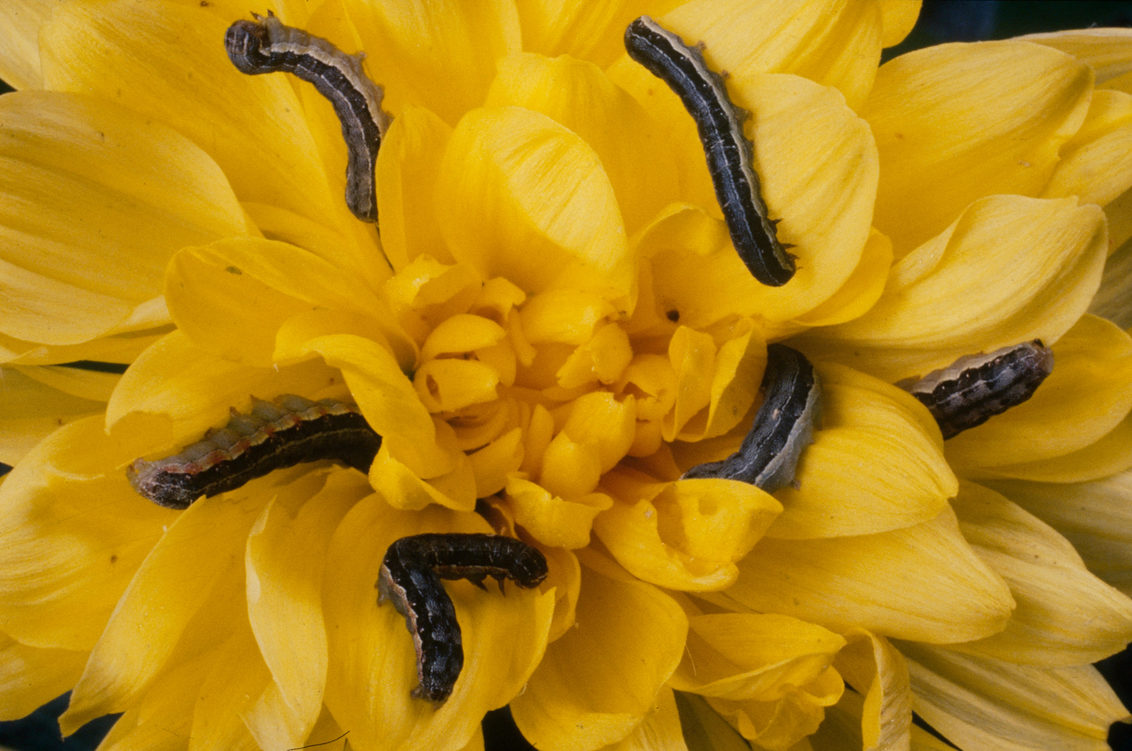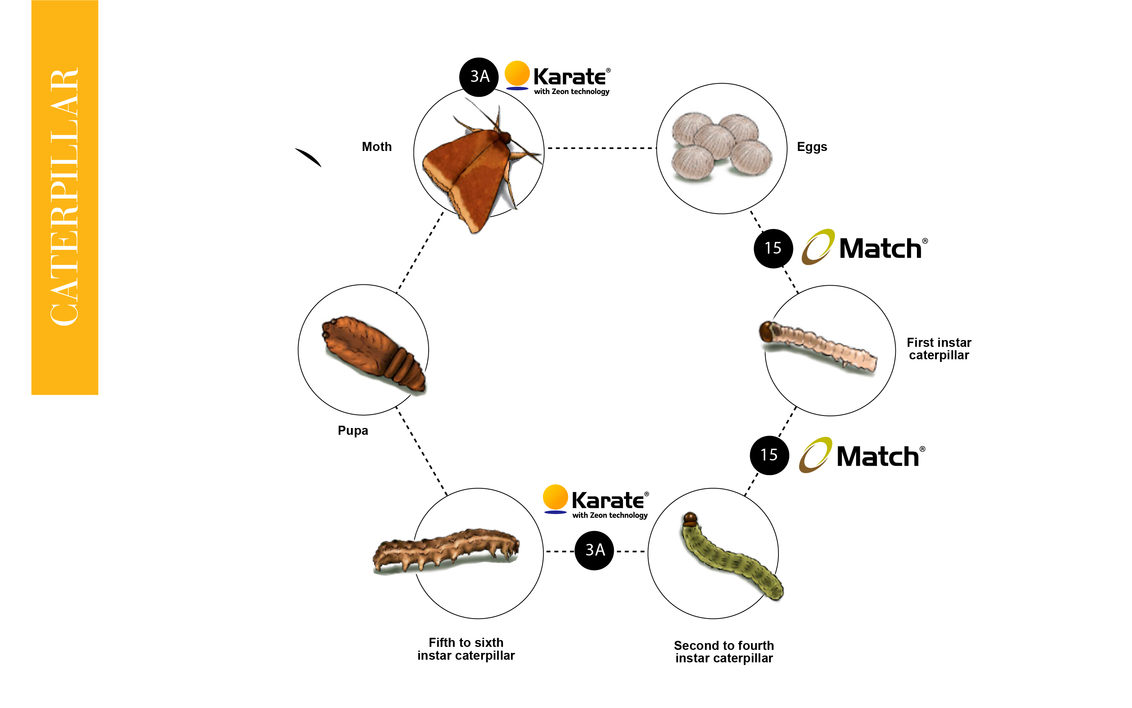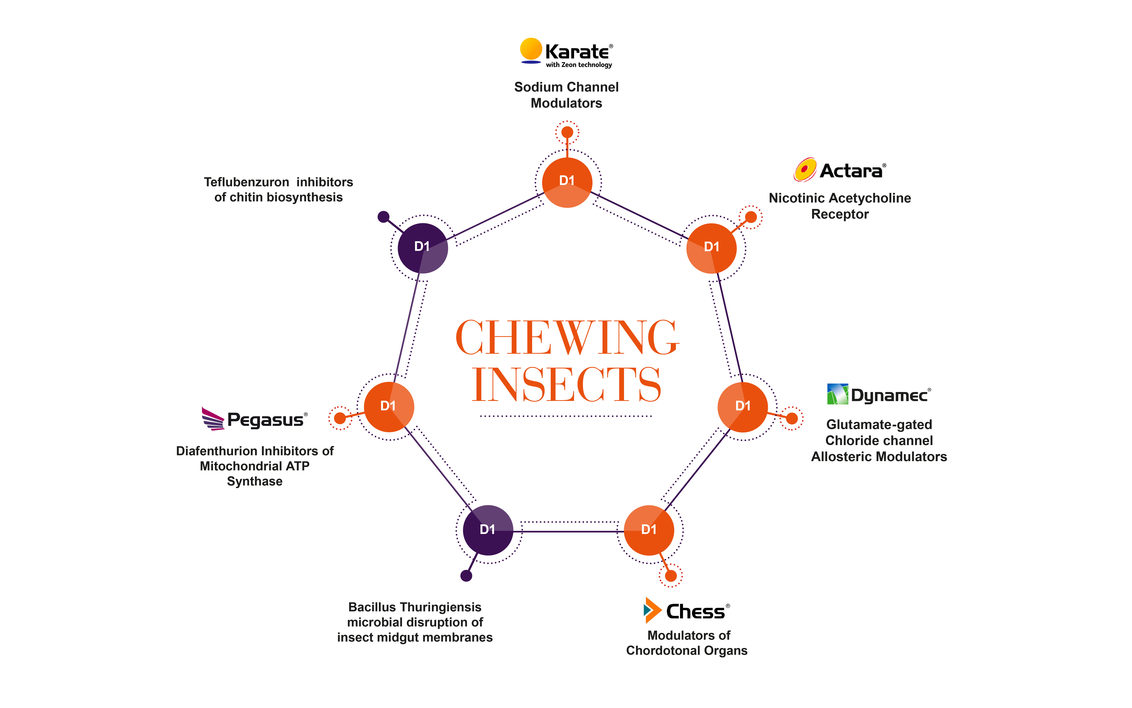What Are Caterpillars?
Caterpillars are the larval stage of a moth or butterfly. It is the second part of their four-stage life cycle (egg, larva, pupa, adult).
Caterpillars feed on leaves, buds, growing points, and flowers. Leaf damage reduces leaf area which can slow plant growth. Feeding on flowers causes primary damage. Caterpillars usually bore clean, circular holes through flowers and leaves. Excrements (feces/waste) of the feeding caterpillars are placed away from damaged plant parts and the holes serve as entry points for secondary infection by diseases, causing decay. One caterpillar can damage several flowers and leaves. Helicoverpa armigera is a quarantine pest.
Management
An Integrated Pest Management (IPM) programme involving monitoring of pest population, cultural applications, practices biological controls, and insecticides.

Caterpillar Life Cycle
Understanding a disease’s life cycle is vital to maintaining control of your crops. Below is the caterpillar life cycle, to help you get maximum control, the best products from our range have been incorporated.

Managing resistance
The caterpillar is the larval stage of the butterfly or moth and it can cause significant damage to the leaf, stem, or petals. They eat complete holes, cause window damage and also contaminate the plant with its faeces. Monitoring butterflies or moths can be useful for planning the timing of the first use of a plant protection product. The younger the caterpillar, the more sensitive it is to crop protection products. Good spraying technique is also essential due to the difficulty of targeting them with a spray application.
In the graphic below are Syngenta products as well as other active ingredients available on the market.
To prevent a crop developing resistance it is important that you alternate between the different active ingredients. It is important to pay attention to the mode of action the product has. Rotation of products is a key strategy but it’s important those products have different FRAC codes, as this can reduce further resistance development. Ensure your program takes this into account. If you are in a situation where products with the same mode of action are applied twice in a row, moving to another product with a different FRAC group becomes more even more important.


















































